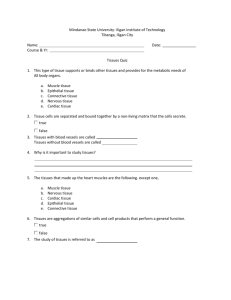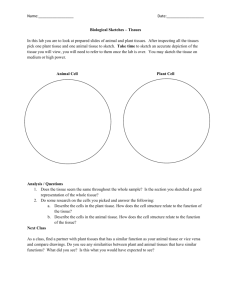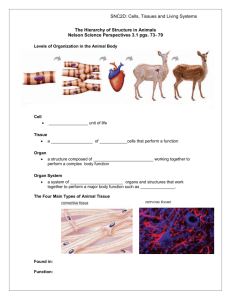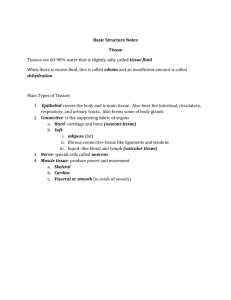CV Regulation BP
advertisement
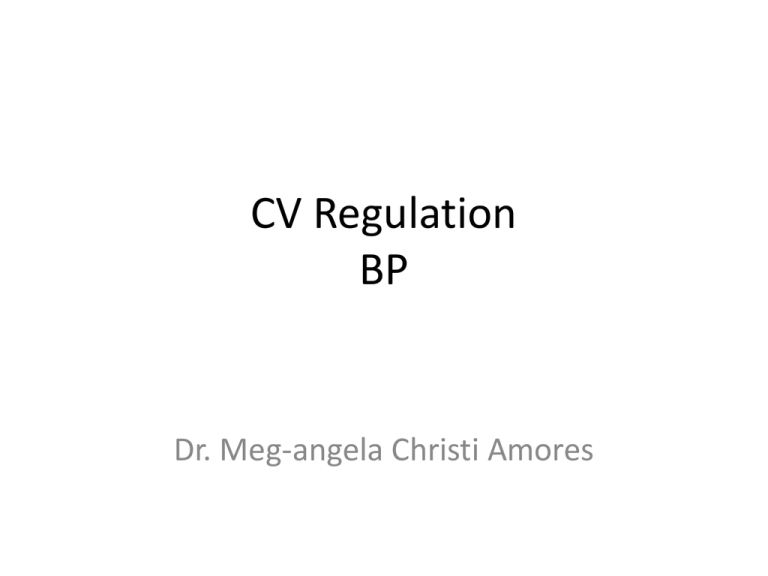
CV Regulation BP Dr. Meg-angela Christi Amores Blood Pressure • Patient: Doc, pila akong BP? • Doctor: 110/70 mmHg • Ever wonder why BP is measured in millimeters mercury? Blood Pressure • the mercury manometer has been used since antiquity as the standard reference for measuring pressure • blood pressure means the force exerted by the blood against any unit area of the vessel wall • Pressure of 50 mmHg - means that the force exerted is sufficient to push a column of mercury against gravity up to a level 50 mm high Summary of the Integrated, Multifaceted System for Arterial Pressure Regulation • first line of defense against acute changes in arterial pressure is the nervous control system • second line of defense achieved mainly by kidney mechanisms for long-term control • However, there are other pieces to the puzzle • Pressure Control Mechanisms That Act After Many Minutes • (1) the renin-angiotensin vasoconstrictor mechanism, (2) stress-relaxation of the vasculature, and (3) shift of fluid through the tissue capillary walls in and out of the circulation • Within 30 mins to several hours • Rapidly Acting Pressure Control Mechanisms, Acting Within Seconds or Minutes • acute nervous reflexes or other nervous responses • SECONDS: (1) the baroreceptor feedback mechanism, (2) the central nervous system ischemic mechanism, and (3) the chemoreceptor mechanis • (1) to cause constriction of the veins and provide transfer of blood into the heart, (2) to cause increased heart rate and contractility of the heart to provide greater pumping capacity by the heart, and (3) to cause constriction of most peripheral arterioles to impede flow of blood out of the arteries • Long-Term Mechanisms for Arterial Pressure Regulation. • renal-body fluid pressure control mechanism • decrease in arterial pressure leads within minutes to an increase in aldosterone secretion Cardiac Output, Venous Return • Cardiac output is the quantity of blood pumped into the aorta each minute by the heart • Venous return is the quantity of blood flowing from the veins into the right atrium each minute Cardiac Output • Factors: (1) the basic level of body metabolism, (2) whether the person is exercising, (3) the person's age, and (4) size of the body • young, healthy men, resting cardiac output averages about 5.6 L/min • women, this value is about 4.9 L/min Venous Return • principal factors that affect venous return to the heart from the systemic circulation: – Right atrial pressure, which exerts a backward force on the veins to impede flow of blood from the veins into the right atrium – Degree of filling of the systemic circulation – Resistance to blood flow between the peripheral vessels and the right atrium Local control of blood flow • Delivery of oxygen to the tissues • Delivery of other nutrients, such as glucose, amino acids, and fatty acids • Removal of carbon dioxide from the tissues • Removal of hydrogen ions from the tissues • Maintenance of proper concentrations of other ions in the tissues • Transport of various hormones and other substances to the different tissues Variations in Blood Flow in Different Tissues and Organs ORGAN PERCENT Brain 14 Heart 4 Bronchi 2 Kidneys 22 Liver 27 Muscle 15 Bone 5 Skin 6 Thyroid 1 Adrenal glands 0.5 Others 3.5 Phases of blood flow control • Acute Control • achieved by rapid changes in local vasodilation or vasoconstriction of the arterioles, metarterioles, and precapillary sphincters • Long term control • slow, controlled changes in flow over a period of days, weeks, or even months • increase or decrease in the physical sizes and numbers of actual blood vessels supplying the tissues Long term blood flow regulation • to change the amount of vascularity of the tissues • actual physical reconstruction of the tissue vasculature to meet the needs of the tissues • the final degree of response is much better in younger tissues than in older • Vascularity Is Determined by Maximum Blood Flow Need, Not by Average Need Humoral control of the circulation • control by substances secreted or absorbed into the body fluids-such as hormones and ions • Vasoconstrictors: – Norepinephrine and epinephine – Angiotensin II – Vasopressin – Endothelin Humoral control of the circulation • Vasodilators: – Bradykinin – Histamine • IONS: • Inc calcium ion concentration causes vasoconstriction • Inc potassium ion concentration causes vasodilation • Inc Mg and Hydrogen - vasodilation

